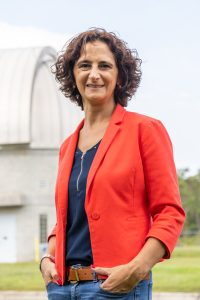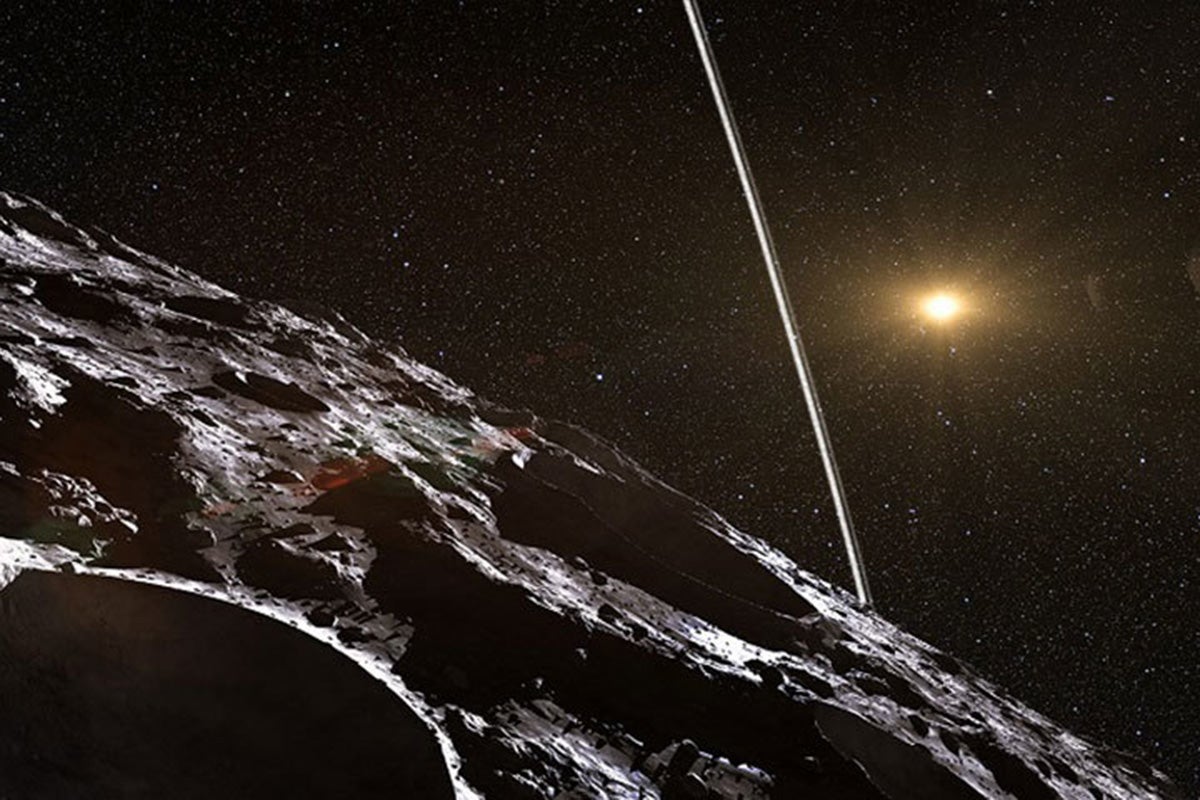Researchers using the James Webb Space Telescope (JWST) have detected the ring system of a small, icy asteroid more than 2 billion miles away with remarkable precision.
The work demonstrates a new way to use the space telescope and opens the door to an advanced means of characterizing small objects in the distant solar system.
The researchers made the observations in October 2022 and shared their findings online this month.
The celestial object is called Chariklo, and its double rings were first discovered by a team of astronomers in 2013. The existence of the rings was surprising because previously it was thought that only the giant planets could have rings.
Chariklo is the second smallest celestial object that has confirmed rings and is the fifth ringed celestial object discovered in the solar system.
The new observations using the JWST captured data will allow researchers to delve deeper into the rings’ composition, including their thickness, and the sizes and colors of the rings’ particles.
These observations were the first time that the technique known as stellar occultation was performed with the JWST.
An occultation occurs when objects in the solar system pass in front of a star, making the light from the star disappear during a short period of time.
Noemí Pinilla-Alonso, an associate scientist at UCF’s Florida Space Institute who works on the occultation research and leads the spectroscopy research, described the occultation as a “wink” of the star, just a very short event that can happen in seconds.


“Predicting an occultation with the Webb is a hard task,” Pinilla-Alonso says. “It is like predicting a moon eclipse but for a tiny object that is billions of miles away and with an orbit not so well known.”
Observations of the light of this star in the short time-span of the occultation provide an instantaneous picture of the object, thus gaining a greater understanding of the objects’ size, shape, and density, among other characteristics, says research team member Estela Fernández-Valenzuela, an assistant scientist at UCF’s Florida Space Institute.
“Trans-Neptunian objects (TNOs) are among the most primitive bodies in the solar system, and therefore, measuring their density and understanding their internal composition is pivotal in order to understand the solar system formation and evolution,” Fernández-Valenzuela says.

“Now, thanks to the James Webb’s exceptional sensitivity in the near-infrared light range, we are about to open a new era in the knowledge of our solar system,” she says.
A couple of days after the occultation, JWST was also used to observe Chariklo spectroscopically, which resulted in the detection of the signature of crystalline water ice in the Chariklo system for the first time.
Observations from ground-based telescopes had hinted at crystalline water ice in the Chariklo system before, but the exquisite quality of the Webb spectrum has revealed its clear signature, Pinilla-Alonso says.
“The surface of Chariklo is dark, red, and depleted of ice according to the analysis of ground-based spectra carried out in 2014”, Pinilla-Alonso says. “The water ice that is observed in the spectra is on the rings that surround this small body. The origin of these debris is still unknown although some theories explain that they may come from an icy body that collided with Chariklo in the past.”
“By observing Chariklo with Webb over several years as the viewing angle of the rings changes, we may be able to isolate the contribution from the rings themselves,” Pinilla-Alonso says.
“These infrared measurements will allow us to better understand the surface composition of TNOs and the chemical processes that these objects have undergone since they were formed,” she says. “The telescope’s high sensitivity, combined with detailed models, may allow scientists to tease out the signature of the ring material distinct from that of Chariklo.”
The spectroscopic analysis is led by Pinilla-Alonso. The stellar occultation project is led by Pablo Santos-Sanz, a planetary scientist at the Instituto de Astrofísica de Andalucía in Granada, Spain.
Pinilla-Alonso and Fernández-Valenzuela’s roles in the occultation studies include contributing to the data analysis to extract information of the ring shapes, brightness, and particle sizes.
Researcher Credentials
Pinilla-Alonso joined UCF in 2015 as an associate scientist in planetary science at the Florida Space Institute. She is also the Deputy Principal Scientist of the Arecibo Observatory since 2017. She is currently leading the scientific analysis of the Chariklo system’s spectrum obtained by Webb’s Near-infrared Spectrograph Instrument.
Fernández-Valenzuela joined UCF in November 2017 as a postdoctoral scholar and recently an assistant scientist at UCF’s Florida Space Institute. She leads projects to study solar system bodies using stellar occultations.




